How to treat diffuse changes in the myocardium. Diffuse changes in the myocardium
Sometimes passing a regular medical examination, a person is diagnosed with diffuse changes in the myocardium. Many people don’t even know what it is and whether it is life-threatening.
We should be concerned about our health, and especially the work of the heart, because this organ performs the most basic functions in our body. These changes are not a disease, but only a sign of disorders in the heart muscle.
Alas, but this pathology, on early stages can be asymptomatic and the person continues to go to work, lead his normal life, only aggravating his situation. In the future, all this will lead to more serious problems. This term can affect everyone, so we suggest that you familiarize yourself with the causes of occurrence and how to behave with these changes.
Diffuse changes myocardiumDiffuse changes in the myocardium - the conclusion of additional studies in the form of electrocardiography (ECG) and echocardiography (echo-KG). By itself, such a diagnosis only indicates that some changes are taking place inside the heart muscle (myocardium). Over time, they can spread to the entire myocardium.
Diffuse changes in the heart muscle usually occur with myocardial diseases that are inflammatory in nature (myocarditis), metabolic in nature (myocardial dystrophy). They also occur as a result of growth instead of myocardial fibers connective tissue, which is often the outcome of a disease such as myocardiosclerosis.
Diffuse changes may cause disturbances water-salt metabolism, may be triggered by heavy exercise and the use of a particular class of drugs. With all these diseases, the heart muscle is affected evenly in all departments.
The atria, ventricles and interventricular septa. This is revealed during examination as a diffuse lesion. cardiac myocardium. The human heart muscle is unique complex cells that are able to transform the energy obtained as a result biochemical processes, into mechanical energy that causes heart contractions.
This type of activity depends on many factors that promote intracellular metabolism in the myocardium. Therefore, any shifts in constancy internal environment of the body can be reflected in the violation of the vital activity of heart cells, whether it is heart disease, disorders hormonal metabolism in the body or condition after an infectious disease.
Diffuse changes in the myocardium is not a disease, but a syndrome, upon detection of which the doctor should determine what caused it - a serious illness or minor metabolic disorders.
The occurrence of such signs is due to the fact that part of the cells, during biochemical shifts, begin to work and contract not quite correctly, as a result of which the electrical activity of the sections of the heart muscle recorded on the ECG will not be uniform. In other words, diffuse changes in the myocardium are clusters of altered cells, through which the conduction of electrical impulses is impaired.
Disturbances in cell activity can be not only diffuse, that is, covering areas throughout all parts of the heart, but also focal, for example, with the formation of small or large scars in the myocardium. Scars are represented by connective tissue that cannot conduct impulses and is electrically inert, which is what the doctor sees on the cardiogram.
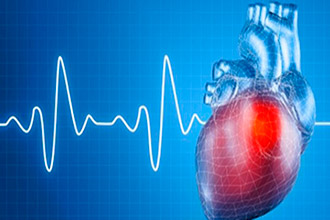
Myocardium - what is it? It is formed by striated muscle tissue. It consists of cardiomyocyte cells, which are responsible for correct rhythm hearts. Muscle tissue is the middle layer of its wall and forms its thickness.
Also, myocardial tissue is included in the muscular layers of the atria and ventricles. Due to the lack of communication between the fibers, the contraction of each ventricle and atrium occurs independently. The functions of the myocardium include:
- automatism;
- conductivity;
- excitability;
- contractility.
Automaticity is the contractility of the heart muscle without external stimulation, since impulses arise independently in the myocardium itself, the fibers of which form nodes of automaticity: sinoatrial (first order), atrial and atrioventricular (second order).
Conductivity is functional work, during which impulses arise in the nodules and spread throughout all myocardial nodes and heart tissues.
Excitability is the ability to respond to internal and external stimuli. From calm state myocardial tissue passes to active action. Contractility is the ability of excited sections of fibers to become electronegative. Due to the sharp difference between these fibers and others (electropositive), electromotive systole appears.

The following reasons for the development of diffuse changes in the myocardium are identified:
- Not balanced diet;
- hypovitaminosis;
- chronic renal failure, chronic enterocolitis;
- inflammation of the heart muscle;
- metabolic disorders (diabetes mellitus, hyperfunction thyroid gland, adrenal hyperfunction);
- violation of water-salt metabolism;
- exposure to medications;
- cardiosclerosis (when cells muscle tissue replaced by connective tissue cells);
- myocardial hyperfunction.
For the normal functioning of the body, including the heart muscle, a certain amount of proteins, fats and carbohydrates is required every day. If one of the types nutrients during long period time does not enter the body in sufficient quantities, then this is reflected in the state of the tissues of the heart.
The lack of vitamins and microelements also negatively affects the state of the myocardium. For chronic renal failure the filtration capacity of the kidneys is severely disrupted, due to which proteins, minerals and vitamins necessary in the body are excreted in the urine.
At chronic enterocolitis intestinal nutrient absorption is disrupted, which can also cause diffuse changes in the myocardium. Pronounced diffuse changes in the myocardium can occur in diseases of the heart muscle inflammatory in nature(myocarditis), as well as as a result of metabolic diseases (myocardial dystrophy). Myocarditis can be caused by infection, allergies, or exposure to toxic substances.
Myocardial dystrophy develops with a primary disorder metabolic processes in the tissues of the heart. With a disease such as diabetes, the body cannot properly absorb glucose, which affects the condition of all tissues, including the myocardium. Disruption of glucose oxidation processes also leads to endocrine disorders caused by hyperfunction of the adrenal glands and thyroid gland.
Changes in the myocardium can be provoked by alcoholism and drug addiction. It can also affect your heart condition long-term use streptomycin, aminazine, cardiac glycolysis and many other drugs.
In cardiosclerosis, dying myocardial cells are replaced by connective tissue cells, which leads to a decrease in the contractility of the heart. Regular physical exercise and blood volumes become normal for such a heart increased load, which leads to the appearance of pronounced diffuse changes.
Myocardial hyperfunction over a long period of time provokes the death of its cells, which changes the structure of the myocardium. Myocardial hyperfunction is provoked by frequent stress and lack of sleep. Excessive exercise can also cause changes in heart muscle tissue. Diffuse changes in the myocardium can occur with heart defects or high blood pressure.
Diffuse changes may be mild. In this case, this is a variant of the norm (often diffuse changes in the myocardium are found in the elderly). Diffuse changes in the myocardium in a child, which are not accompanied by complaints of fatigue, pain in the heart and shortness of breath, are also a variant of the norm.
Symptoms of diffuse changes in the myocardium are not specific. If, upon detection of mild diffuse changes, the patient did not experience symptoms characteristic of heart disease, then they are not paid attention to. Other possible reasons- these are many chronic conditions body:
- Hormones are catalysts for complex physiological reactions in the body.
- Just like the glands internal secretion, nervous system- a regulator of body functions that controls the coordinated activity of organs, including endocrine glands. Therefore many neurological diseases cause diffuse changes in the myocardium.
- Chronic pathology of the digestive system, in which the absorption of nutrients is inhibited, impoverishes the myocardium with the necessary elements.
The endocrine system regulates metabolism. That's why hormonal imbalance will certainly lead to a failure of metabolic reactions and the formation of toxic derivatives, which will cause changes in the ECG.
A classic example is diabetes. Excess glucose causes oxidative stress with vascular and cardiac muscle damage. Another example is the effects of steroids taken by bodybuilders.
What are the types of heart muscle lesions?
We must understand that diffuse type distortions of the heart muscle can be radically different, they can vary:
- according to the nature of its origin;
- By clinical manifestations;
- according to penetration depth;
- by qualitative changes in cellular structures.
Disturbances (deviations from the norm) with diffuse myocardial damage will be observed everywhere. The considered myocardial lesions often occur in the following pathologies:
- acute myocarditis;
- dystrophic lesions of the heart muscle;
- myocardiosclerosis;
- disturbances of metabolic processes in the body (primarily water-salt metabolism);
- when taking certain medications.
Diffuse type changes in the structure of the myocardium can be superficial or penetrating, associated with inflammatory or other processes, severe or moderate, accompanied by slight tissue hypoxia or necrosis.
Moderate, diffuse type changes in the myocardium are often not accompanied by any symptoms and are detected only on ECG recordings. At the same time, disturbances in standard processes of ventricular repolarization, or, more precisely, early ventricular repolarization syndrome, can be observed on cardiogram recordings.
Let us recall that the syndrome of early ventricular repolarization is usually called a phenomenon noticed on the ECG, characterized by a rise in the places of transition of the ventricular complex to the ST segment above the isoline.
However, sometimes diffuse type (uniform) distortions in the myocardial structure can be associated with the most serious pathological processes, accompanied by damage to the entire left (or right) ventricle, complemented by unpleasant clinical picture: pain behind the sternum, fear of death, etc. pathological condition may well even develop into a myocardial infarction.
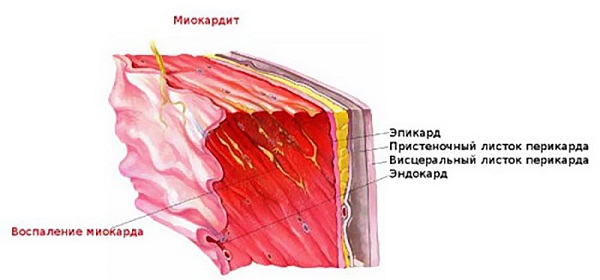
Diffusion changes are not a separate diagnosis, they are only a marker that shows among which diseases associated with myocardial activity the problem should be looked for.
Interesting! The changes themselves are not a reason to panic. Sometimes they are even recorded on a cardiogram. healthy person and pose absolutely no danger.
As a rule, these are “echoes” of excessive physical or emotional stress, excessive dose of alcohol on the eve of the examination. Most often, especially if the patient’s complaints about the state of the body are added to the diffuse changes in the myocardium detected on the ECG, they can mean:
- what flows in the heart muscle inflammatory processes, i.e. myocarditis (inflammation may be infectious nature, infectious-toxic, allergic);
- are happening metabolic disorders substances in the heart (for example, myocardial dystrophy);
- hormonal disbalance;
- disturbance of the water-salt balance, both directly in the myocardium and in the body as a whole;
- poisoning with chemicals or drugs.
We should also not forget that there are moderate diffuse changes in the myocardium, and they often correspond only to age-related changes body, and the heart muscle in particular. How does pathology develop?
Diffuse changes begin at the cellular level and often appear as a result of influence negative factors(regular excessive physical activity, fasting, anemia) for a long period.
Usually, all negative factors lead to metabolic disorders, and these, in turn, lead to changes in the electrolyte composition (potassium and sodium balance) of the blood and myocardial cells. As a result, the mechanisms of energy metabolism within cardiomyocytes are disrupted, and they can no longer contract and relax as necessary for normal cardiac output.
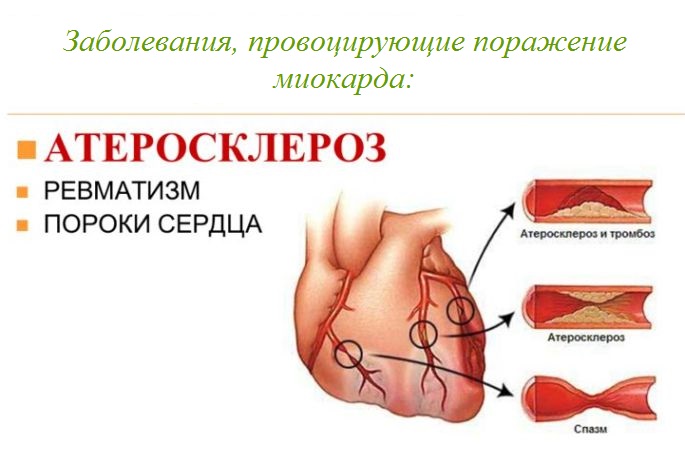
The most common and significant reason diffuse changes in the myocardium are a number of heart diseases, such as:
- myocarditis, which is characterized by inflammatory processes;
- myocardial dystrophy resulting from abnormal metabolic processes;
- atherosclerosis;
- tachycardia;
- arterial hypertension and hypertension;
- angina pectoris;
The reasons that provoke the spread of changes in the myocardium include kidney disease, liver disease, endocrine system, diabetes. Negative impact carry various infectious processes. Carefully! Medications may also cause myocardial harm if taken without medical advice.
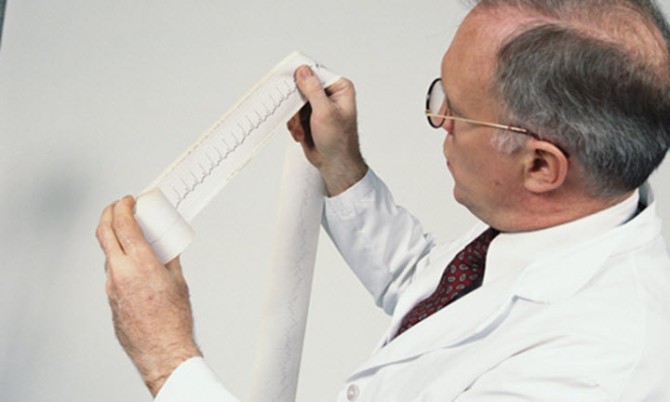
With the help of such additional methods studies like ECG Echo-KG can establish various diffuse changes in the myocardium.
These changes usually do not have any characteristic features, by which it would be possible to establish final diagnosis(for example, myocarditis or myocardial dystrophy), so the conclusion "Diffuse changes in the myocardium" is important only in combination with the data of the survey and examination of the patient and additional research(usually laboratory).
Nevertheless, these studies are important, as they allow to separate diffuse changes in the myocardium from focal ones, which may be the result of myocardial infarction, rheumatism. On the ECG, diffuse changes in the myocardium will be recorded in all leads, while focal changes myocardium can be recorded in one or two leads.
The ECG also shows rhythm disturbances, conduction disturbances, and signs of hypertrophy (increase in volume) of the heart.
Diffuse changes are no less characteristic on Echo-CG, where changes in echogenicity (ultrasound reflections) are clearly visible throughout the myocardial tissue.
Echocardiography may reveal expansion (dilatation) various departments heart, myocardial hypertrophy, disruption motor activity, indirect signs reduction contractility myocardium.
Main changes in the myocardium during myocarditis
Myocarditis is an inflammatory disease of the myocardium. They can be infectious, infectious-toxic, allergic and toxic-allergic. Infectious and infectious-toxic myocarditis include, for example, myocarditis due to influenza, scarlet fever and other infections.
Allergic myocarditis can occur against the background of some chronic diseases, taking medications. Toxic-allergic myocarditis can occur when the body is exposed to various toxins to which the body is allergic (alcoholic myocarditis, myocarditis due to thyrotoxicosis - increased function thyroid gland).
Myocarditis can be either diffuse or focal; this will be visible on ECG and Echo-CG. In this case, the ECG shows a decrease in waves in all leads and heart rhythm disturbances.
Similar changes in the echogenicity of myocardial tissue are also noted on Echo-CG, which make it possible to identify the expansion of various parts of the heart and impaired motor activity of the myocardium. At acute lesions changes in the heart muscle on the ECG during repeated studies make it possible to timely detect the severity of the process.
Changes in the heart muscle in myocardial dystrophy
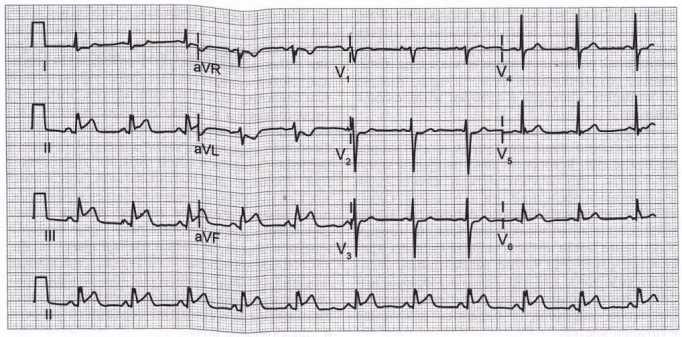
Myocardial dystrophies are conditions that are a consequence of a primary disorder of metabolic processes in the heart muscle (most often this is a disorder biochemical reactions formation and conversion of energy), which is accompanied by symptoms of insufficiency of myocardial contractility.
Changes in ECG and Echo-CG in myocardial dystrophies in most cases are not much different from changes in myocarditis. It will be possible to distinguish (differentiate) these diseases only after laboratory research: V general analysis blood during myocarditis there will be changes characteristic of the inflammatory process.
In a biochemical blood test, you can often see changes that led to dystrophic changes in the myocardium. Thus, diffuse changes in the myocardium are only the conclusion of additional research methods; the final diagnosis is made only by a doctor based on all the data.
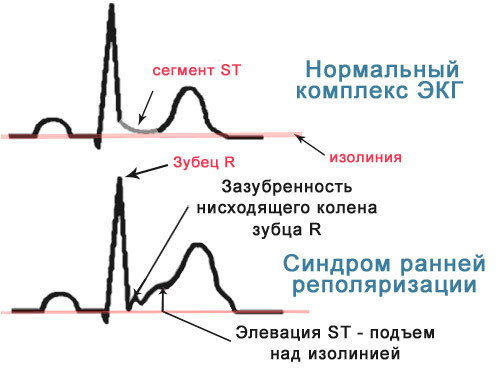
This syndrome occurs in patients with diffuse diseases myocardium - myocarditis, myocardial dystrophy, myocardiosclerosis.
The very name of the syndrome suggests that changes occur in the myocardium of all parts of the heart - the atria, the anterior, posterior and lateral walls of both ventricles, and the interventricular septum.
Consequently, on the ECG, these changes will be recorded in almost all leads, in contrast to focal changes in the myocardium, limited to one or two specific leads. In case of diffuse myocardial changes syndrome, the following can be seen on the electrocardiogram:
- Reduced K wave voltage.
- S-T segment depression.
- Various changes to the T wave:
- voltage reduction,
- two-phase,
- flatness,
- negativity,
- moderate expansion.
- non-specific (focal blockades),
- incomplete blockade right leg His bundle,
- long QT syndrome.
It is important to emphasize that these changes will be observed in almost all leads, will persist for several months, and will not in all cases be noted in the full “range” listed.

The most great danger this disease lies in the fact that it can proceed in the early stages without visible symptoms. And those manifestations that will begin to be observed will not be specific.
However, often such manifestations that are not accompanied painful symptoms, are recognized as the norm, and are inherent in most cases in older people.
Since such changes cannot be called an independent diagnosis that determines specific pathology or illness, they rather act as an indication on the cardiogram of some kind of deviation. If they are found, they must be checked and passed full examination, as a result of which it is necessary to determine the focus.
The main symptoms of diffuse changes in the myocardium, in addition to deviations on the cardiogram, are the following signs:
- pain in the region of the heart;
- shortness of breath that occurs for no reason;
- constant feeling of weakness, even after a long rest;
- incomprehensible interruptions in the rhythm and work of the heart;
- weak pulse.
Diffuse myocarditis has its own catchy symptoms. They consist of increasing cardiac and vascular failure and arrhythmia.
With a not easy infection, the first idea is vascular insufficiency- a fall blood pressure, collapse. In each case, the doctor has to decide whether vascular or heart failure prevails.
Objective indicators are revealed during a medical examination and examination:
- moderate pallor of the skin, cyanosis of the lips;
- swollen and pulsating neck veins;
- a murmur is heard on auscultation.
In older people, characteristic influenza-induced damage to the heart muscles manifests itself in the form of decompensation, the listed symptoms appear, and general weakness increases. The disease may go unnoticed by young patients with angina.
Manifestations of myocarditis are interpreted by simple weakness. IN mandatory be sent to undergo an ECG and blood tests on the background of recovery.
In diagnosis, both recognized tachycardia and bradycardia are important, especially without a response to physical activity. It is fundamentally important to notice the first indicators of myocarditis, because with some infectious diseases they appear during the recovery period, at a time when control over the patient is weakened.
Diagnostics
The main diagnostic methods are ECG and ECHO-CG. It is on the cardiogram (the most common examination) that one can notice disturbances occurring in the myocardium in all parts of the heart. Consequently, on the ECG they will be recorded in all leads, which is why they differ from focal lesions, which are limited to 1 or 2 leads.
What does diffuse changes on an ECG mean? When deciphering, the functionalist doctor notes:
- decrease in the ability of myocardial cells to conduct nerve impulses and shrink;
- decrease in R wave voltage in all leads;
- early ventricular repolarization syndrome;
- rhythm failure.
However, diffuse changes in the cardiogram may indicate serious heart pathology in the presence of certain symptoms (for example, characteristic of myocardial infarction). Ideally, it is desirable to receive a conclusion without any violations, but this result is quite rare, especially in older patients.
If the ECG shows signs of diffuse changes in repolarization processes, this can be interpreted as a result of aging of the heart muscle and the body as a whole. However, it is necessary to exclude ischemic disease hearts with this pathology, even in young patients. To do this, you need to undergo ECHO-CG and bicycle ergometry. On ECHO-CG the following are clearly visible:
- changes in echogenicity;
- expansion of departments;
- hypertrophy;
However, this does not yet indicate the presence of a pathological process, but it cannot but raise alarm bells. To clarify the diagnosis, it is necessary to collect an anamnesis, pass lab tests, undergo a thorough examination by a specialist. Diffuse disorders indicate restructuring of the myocardium at the cellular level.
Only comprehensive diagnostics allows you to determine the form and type of the pathological process. There are many reasons for the development of moderate diffuse changes in the myocardium. We will focus on the most basic ones.

Any changes in the work or structure of the myocardium are treated strictly after drawing up an individual therapeutic plan. At the same time, each specific patient can receive radically various treatments with similar cardiogram indicators.
Any treatment is prescribed only after a thorough diagnosis and clarification of the causes of the development of the pathology. Treatment is aimed at eliminating the causes that led to certain myocardial distortions.
Methods for eliminating diffuse myocardial damage may include:
- prescribing medications that normalize myocardial conductivity;
- the use of drugs that help eliminate spasm of the vascular bed and resulting heart failure;
- use of energy-supplying drugs;
- prescribing potassium-based drugs;
- usage vitamin complexes.
Equally important in this case is the prevention of complications. cardiovascular problems. Preventive actions with this pathology may be the following:
- regular check-ups with a cardiologist;
- normalization of lifestyle;
- nutrition correction;
- normalization of night sleep and rest, correction emotional state.
For example, in order for your sleep to become healthy and sound, doctors recommend regularly using the “Healthy” medical pillow. The “Healthy” pillow, among other things, allows you to get rid of snoring by preventing respiratory arrest during sleep.
It is very important for the prevention of cardiovascular problems regular exercise and stay on fresh air.
It is these points that often allow you to cope with moderate hypoxia, preventing truly complex, more dangerous heart problems. Complex treatment impossible without balanced diet:
- starvation is completely excluded;
- the amount of salt should be limited to a norm of 4.5 grams per day;
- protein foods in the diet should be provided low-fat varieties fish, meat and seafood;
- Necessarily daily use vegetables and fruits with increased content potassium (spinach, jacket potatoes, oranges, bananas, raisins, dried apricots);
- preference is given to boiled and steamed dishes.
Diffuse changes in the myocardium are the result of metabolic disorders in cardiomyocytes. For their normal functioning, it is important that the food is complete and regular. It is necessary to refuse bad habits(smoking, alcoholism), limit excessive physical activity, avoid stress.
Negligent attitude towards timely treatment is completely unacceptable, since this can lead not only to diffusion of the myocardium, but also to a deterioration in the functioning of the heart as a whole, a decrease in its ability to optimally contract, as a result of which even a normal blood volume may become unbearable, and this will again become a threat to the myocardium.
Based on the fact that there are many reasons why diffuse changes occur, treatment methods are accordingly varied. Naturally, there is no question of making any prescriptions without an appropriate examination and a definitive diagnosis.
Only after this will the attending physician select methods and means to eliminate the causes that caused the development of disorders in the myocardium. Most often this drug treatment, pursuing the following goals:
- preventing the diffusion process;
- restoration of normal functioning of the myocardium;
- normalization of cardiac muscle conductivity;
- eliminating the causes of heart failure and the consequences of the inflammatory process;
- prevention of vasospasm;
- saturating the body with energy-supplying drugs and necessary vitamin complexes.

Traditional medicine has accumulated considerable experience in the use of various herbal teas, infusions and mixtures for prevention and treatment cardiovascular diseases. All of them are, to one degree or another, suitable for smoothing out diffuse changes in the myocardium.
For example, a mixture of hawthorn, honey and propolis is an excellent remedy for normalizing blood circulation in the heart muscle. It calms and lowers blood pressure. For palpitations, use hawthorn fruits.
Is it possible not to mention beneficial influence valerian officinalis, leaves and flowers of peppermint, calendula, tricolor violet, which are often used in “hearty” recipes. The composition, which includes: Walnut, lemon, dried apricots and honey.
But excessive popularization of traditional medicine can sometimes do a disservice, only slightly dulling the symptoms of a serious disease. Therefore, they can only be used in consultation with specialists.

Moderate changes in the myocardium are not a disease; their appearance is not accompanied by characteristic symptoms and indicates the long-term influence of any negative factors and diseases.
If the cause of the pathology is eliminated in time, the myocardial cells are completely restored in a short period of time. In some cases this may happen without an appointment medicines, sometimes additional vitamin complexes, drugs to improve metabolism, and a balanced diet are required.
However, more often changes are diagnosed in combination with symptoms of heart failure. If they have not yet become irreversible (when myocardial cells are replaced by connective tissue), the development of pathology in most cases can be stopped.
Courses of drugs that improve the metabolism in the heart muscle, in this case, are prescribed 2-3 times a year. Advanced forms of diffuse changes lead to the development severe forms heart failure and cardiosclerosis, which cannot be completely cured.
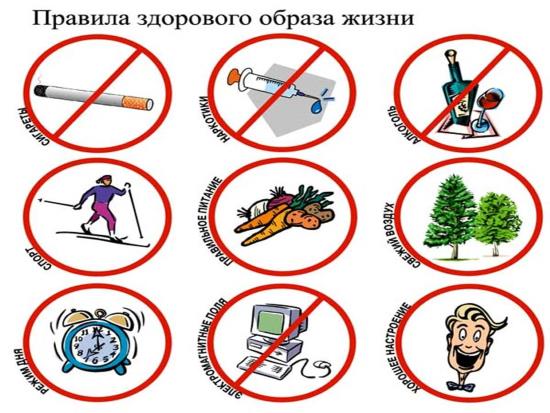
It is important to pay attention to the fact that these changes can be formed over a fairly long period of time. In order to notice deviations from the norm in the state of the heart muscle in time, it is assumed, first of all, serious attitude to your health.
Regular visits to the doctor, instrumental and laboratory examinations will help to identify deviations that have arisen and prevent severe course inflammatory or infectious course process in the heart muscle.
These measures will contribute to the fact that the changes that have begun can not only be stopped with the help of timely treatment of diseases - provocateurs, but also to return the heart muscle to its previous working state. From this it follows that the development of timely detected diffuse changes in the myocardium can be stopped by following the advice of specialists on the management healthy image life.
To do this, you need to balance your diet, if possible, review physical activity, normalize sleep, avoid stressful situations and, of course, follow the doctor's recommendations regarding the treatment selected for a specific disease that provoked myocardial damage.
If, after undergoing electrocardiography, you were given a conclusion that says “diffuse changes in the myocardium” or “nonspecific changes in the myocardium”, do not worry. An ECG is a method that first of all allows you to suspect possible violations cardiac function, but a definitive diagnosis cannot be made on its basis.
Mild and moderate transformations in the heart muscle are often reversible after giving up bad habits and correcting non-cardiac diseases. When reading such conclusions to cardiograms, parents especially panic, but in vain. In children, such changes are common and disappear as soon as they grow up. Your pediatrician will look at the cardiogram and, if necessary, refer your child for further examination or an appointment with to a specialist– cardiologist.
However, diffuse disorders are a reason to change your lifestyle and give up bad habits. Perhaps your heart is telling you that it’s time to start eating right and quit smoking. Tips for lifestyle modifications include:
- First of all, healthy and proper nutrition which should consist of: vegetables and fruits, legumes, low-fat fermented milk products, fish, lean meat.
- The consumption of fried and livestock, palm and coconut oil, sweet, spicy, smoked, salty foods.
- Taking vitamin complexes. Exercising can reduce your risk of developing heart problems. Any person, healthy or sick, can benefit from moderately intense exercises (for example, race walking), the duration of which must be at least two and a half hours per week.
- Maintenance normal weight, which is very beneficial for heart health. If you are obese, you should strive through a rational, balanced diet and physical exercise normalize weight.
- Limit the consumption of alcoholic beverages (alcohol abuse contributes to the development of obesity and heart problems).
- Rejection of bad habits.
- Control stress through meditation, yoga, exercise, hobbies.
- Normalization of night rest.
How often does a person, upon hearing such a diagnosis for the first time, fall into panic? The reason for this is most likely the lack of basic knowledge about. This article will discuss in detail and clearly the question of what diffuse changes in the myocardium are and how dangerous the disease is.
Description of the disease
First of all, it should be noted that the myocardium is the heart muscle designed to support normal rhythm heartbeats and supplying blood to the entire system human body. And its lesions are diffuse changes in the myocardium. The nature of the origin of these lesions is very diverse.
These changes can be shown by a cardiogram of the heart, which will be evidence of any changes in the work of the heart muscle, that is, diffuse changes in the myocardium. It should be noted that this is not yet a diagnosis!
If any changes occur, the cause should be identified. This can only be done by a doctor after an examination that includes a blood test, urine test, and other samples that can reveal what prompted the occurrence of diffuse changes in.
Deviations marked by an electrocardiogram do not signal a specific disease, but only the occurrence of features inherent in some kind of heart muscle disease. And this, in turn, should serve as a reason for more thorough examination and, of course, establishing the correct diagnosis. That is, they focus on the presence of a deviation from the norm and indicate a disease associated with the work of the heart muscle, which suggests where to look for the problem.
Note! The changes themselves are not a death sentence, so there is no need to panic. The fact is that even in a completely healthy person, diffuse changes in the myocardium can be recorded that do not require special treatment, since they are only a consequence of severe physical work, emotional experiences and even drinking alcohol before the examination. Also, minor myocardial lesions are characteristic of the elderly.
What can lead to diffuse changes?
Almost impossible to name main reason the occurrence of damage to the heart muscle. There are a lot of them, and often several of them are observed in the process. Here we will try to focus on the main reasons causing the spread of changes in the myocardium:
- It's no secret that for the normal functioning of the entire human body as a whole, a balanced amount of proteins, fats and carbohydrates is needed. If the body lacks one of these components long time, then, of course, this will also affect the state of both the tissues of the heart in general and the myocardium, in particular.
- The lack of vitamins and microelements also negatively affects the myocardium.
- It is impossible not to take into account as a cause that can cause diffuse changes, physical overload, the use of alcohol and drugs. These phenomena can occur if there is a decrease in the ability of contractility work.
- It should also be noted harmful influence smoking due to the fact that nicotine inhibits blood circulation due to vasoconstriction.
- A detrimental effect cannot be ruled out frequent stress And an insufficient amount sleep.

These reasons can lead to diffuse changes in the myocardium if recommendations for organizing a correct and healthy lifestyle are ignored.
Diseases that provoke myocardial damage
The most common and significant cause of diffuse changes in the myocardium is a number of heart diseases, such as:
- myocarditis, which is characterized by inflammatory processes;
- myocardial dystrophy resulting from abnormal metabolic processes;
- atherosclerosis;
- arterial hypertension and hypertension;
- angina pectoris;
The reasons that provoke the spread of changes in the myocardium include kidney diseases, liver diseases, diseases of the endocrine system, and diabetes mellitus.
Various infectious processes also have a negative impact.
Carefully! Medicines can also harm the myocardium if taken without a doctor's advice.
What symptoms should alert?
An important role in identifying deviations is given to a conversation with the patient if he complains of:
- weakness that occurs for no apparent reason;
- pain in the heart that has not previously made itself felt;
- rapid;
- with more serious heart diseases - fatigue;
- swelling;

When visiting a cardiologist, it is important to tell him in as much detail as possible about the disturbing symptoms, which will help him (after additional examination- tests, ECG, EchoCG) to deliver correct diagnosis and prescribe appropriate treatment.
Methods for combating diffuse myocardial damage
It is important to pay attention to the fact that these changes can develop over a fairly long period of time. In order to notice deviations from the norm in the condition of the heart muscle in time, it is assumed, first of all, to take your health seriously.
Regular visits to the doctor, instrumental and laboratory examinations will help identify any abnormalities that have arisen and prevent a severe course of the inflammatory or infectious process in the muscle.
These measures will ensure that the changes that have begun can not only be stopped with the help of timely treatment of provoking diseases, but also the heart muscle can be returned to its previous working state.
It follows from this that the development of timely detected diffuse changes in the myocardium can be stopped by following the advice of specialists on leading a healthy lifestyle. To do this, you need to balance your diet,, if possible, review physical activity, normalize sleep, avoid stressful situations and, of course, follow the doctor’s recommendations regarding treatment selected for a specific disease that provoked myocardial damage.
About the treatment of the disease
A negligent attitude to timely treatment is completely unacceptable, as this can lead not only to diffusion, but also to a deterioration in the functioning of the heart as a whole, a decrease in its ability to optimally contract, as a result of which even a normal blood volume can become unbearable, and this will again become a threat myocardium.
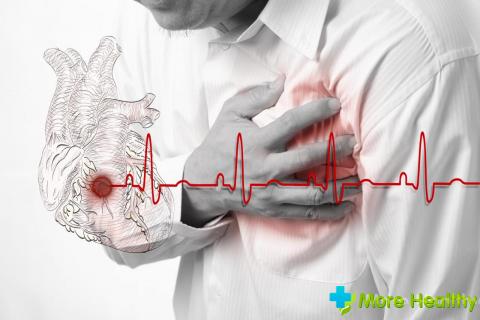
Based on the fact that there are many reasons why diffuse changes occur, treatment methods are accordingly varied. Naturally, there is no question of making any prescriptions without an appropriate examination and a definitive diagnosis.
Only after this will the attending physician select methods and means to eliminate the causes that caused the development of disorders in the myocardium. Most often this is drug treatment with the following goals:
- preventing the diffusion process;
- restoration of normal functioning of the myocardium;
- normalization of cardiac conduction;
- eliminating the causes of heart failure and the consequences of the inflammatory process;
- prevention of vasospasm;
- saturating the body with energy-supplying drugs and necessary vitamin complexes.
Disease prevention
The dominant factor should be a diet that provides fractional balanced meals with moderate salt intake. Should be abandoned bad habits. We must not forget about beneficial influence walks in the fresh air. Regular visits to the doctor, timely examination, sanatorium treatment and, of course, taking medications prescribed by your doctor will definitely lead to a complete recovery.
A little about traditional medicine
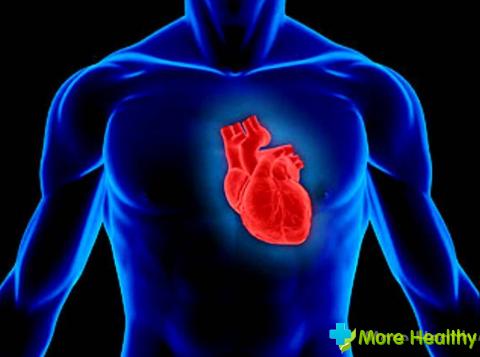
Traditional medicine has accumulated considerable experience in the use of various herbal teas, infusions and mixtures for the prevention and treatment of cardiovascular diseases. All of them are, to one degree or another, suitable for smoothing out diffuse changes in the myocardium.
For example, a mixture of hawthorn, honey and propolis is an excellent remedy for normalizing blood circulation in the heart muscle. It calms and lowers blood pressure. For palpitations, use the fruits.
Is it possible not to mention the beneficial effects of valerian officinalis, leaves and flowers of peppermint, calendula, tricolor violet, which are often used in “heart” recipes. The composition, which includes walnuts, lemon, dried apricots and honey, has proven to be an excellent general strengthening and tonic for the heart.
But excessive popularization of traditional medicine can sometimes do a disservice, only slightly dulling the symptoms of a serious disease.
Therefore, they can only be used in consultation with specialists.
While watching the video you will learn about myocardial infarction.
Important to remember! Only identifying the root causes and professionally selected tactics for treating the disease can give positive results in the fight against it.
Some patients, after undergoing an electrocardiogram or echocardiography, may find “diffuse myocardial changes” in their diagnosis. To understand how serious this disease is and what it threatens the patient with, it is necessary to understand the definition of the concept itself, the causes of its occurrence, treatment methods and methods of preventing it.
The myocardium is the cardiac tissue that makes up its main part. The difference from skeletal muscles is that the basis of its fibers is made up of mononuclear cells. Functionally, it is the most powerful part of the heart. When the heart muscle contracts, blood is pumped through the circulatory system human, providing oxygen and nutrients to all human organs. Diffuse disorders include disorders affecting the entire organ. This means that there is a danger of change physiological properties heart muscle, a decrease in its performance and the occurrence various kinds diseases.
The myocardium is the striated muscle of the heart that contracts and pumps blood
The heart is one of the most important internal organs in organism. It fulfills one of the vital important functions. Taking care of his health is the basis wellness and human longevity. In medicine, a diffuse disorder of cardiac tissue is a process that affects the cells of the heart muscle, and means the presence of certain deformations of its tissue. Pathology can be either reversible or irreversible.
With diffuse changes on the ECG the following is noted:
- decrease in the strength and intensity of contraction of cardiac tissue cells;
- decreased ability of cells to conduct nerve impulses;
- rhythm failure;
- early repolarization of the ventricles of the heart;
- decrease in R wave voltage in all leads.
Deviations can be either minor (sluggish pathological process) or very dangerous. In this case, emergency hospitalization of the patient is required. The process itself does not give a clear idea of the presence of any specific heart disease. But it is an alarming beacon indicating that there is a deviation in the structure of the tissue of the heart muscle that will affect the entire myocardium, and the patient needs to undergo a comprehensive examination.
- pre-infarction conditions;
- ischemic lesions;
- hypoxia.
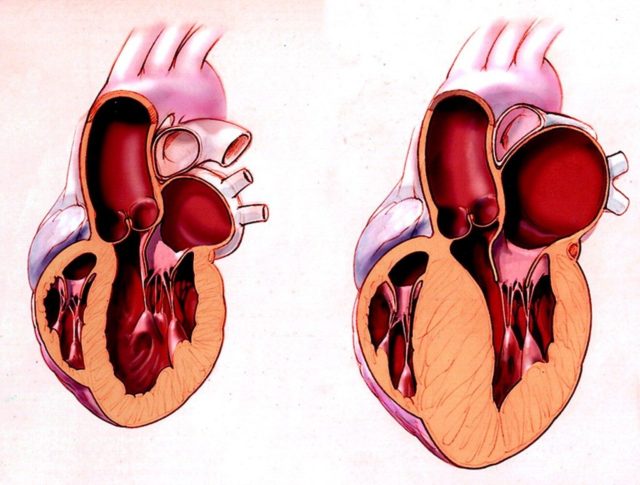
Diffuse changes in the heart muscle lead to deterioration in the functioning of the heart, disturbances in its shape and a decrease in myocardial compliance
Additional studies may include:
- biochemical studies of blood and urine;
- coronagraphy;
Causes of pathology
Diffuse changes can be different in nature, severity, symptomatic and clinical manifestations, and processes occurring in the cardiac tissue. Sometimes they can be detected on an ECG in a completely healthy person. The reason may be emotional stress, physical activity, taking a significant dose alcoholic drinks one or two days before the examination. Pathology is diagnosed even in children as a consequence of previous diseases.
Minor deviations (provided that the causes that caused them do not become regular) do not pose a threat to health and are not a sign of the development of cardiovascular diseases. However, only a doctor can determine the severity of the changes with regular monitoring of the patient.
The reasons leading to diffuse changes include:
- excessive physical activity;
- taking certain medications;
- tachycardia;
- inflammatory processes in the muscular layer of the heart;

A common pathological process in the heart can have different origins
- angina pectoris;
- obesity;
- resulting from a metabolic disorder;
- low or high blood pressure;
- atherosclerosis;
- disturbance of water-salt balance in the body;
- unbalanced diet;
- excessive consumption of alcohol, tobacco, drugs;
- stress;
- lack of sleep.
Diabetes mellitus, problems in the functioning of the liver and kidneys, and disturbances in the functioning of the endocrine system can provoke changes.
Clinical picture
The danger of the pathology is that initially it may not produce visible symptoms or have nonspecific manifestations. Even in older people, the disease may not be painful.
The main symptoms of the pathology include:
- periodic or constant disruptions in heart rhythms, short-term “fading” of the heart;
- shortness of breath after minor physical exertion and at rest;
- general weakness;

The clinical picture of a diffuse pathological process in the heart depends on the cause of its development and severity
- weak pulse;
- a feeling of heaviness, burning or pain in the heart area;
- swelling of the lower extremities;
- chronic fatigue.
If symptoms occur regularly, you should visit a cardiologist. At the appointment, in addition to collecting anamnesis, the doctor prescribes laboratory and instrumental studies. The main methods for diagnosing primary diffuse changes in the myocardium include examinations using the electrocardiogram and echocardiogram. Additionally, the attending physician may prescribe an ultrasound examination.
The earlier the disease is diagnosed, the easier it will be to minimize its consequences and prevent possible complications.
Treatment and prevention of diffuse cardiac changes
Universal methods there is no cure. Treatment is prescribed only after a thorough examination has been carried out and all the causes of changes in the heart muscle have been identified. For each patient, the attending physician prescribes his own regimen depending on the results obtained on the ECG and ECHO-CG. The goal of the course of treatment is to localize and eliminate the causes that led to the disease.
Treatment and prevention regimens include:
- correction of diet and composition of food;
- correction of the patient’s daily routine;

The choice of treatment method depends on what exactly causes these changes in the heart muscle
- creating conditions for normalizing a person’s emotional state;
- correction of the intensity of physical activity;
- giving up alcohol and smoking;
- review of medications when the patient is simultaneously undergoing treatment for other diseases;
- prescribing a course of vitamins and potassium;
- taking medications that improve the conductivity of the heart muscle;
- prescribing medications to eliminate spasm of the vascular bed and prevent heart failure;
- regular examination and observation by a cardiologist.
One of the important components of treatment is proper nutrition of the patient. It must be regular. Fasting is not allowed. The diet should include: low-fat protein food, seafood, vegetables rich in potassium, dried fruits. Boiled and steamed dishes are recommended. It is necessary to reduce salt intake.
Under no circumstances should you self-medicate or use treatment regimens prescribed for other patients as a basis, even if they have similar symptoms and research results. Negligence in treating a disease is also unacceptable. This can lead to worsening of the disease and the development of heart failure.

A healthy diet consisting of whole grains, vegetables and fruits, legumes, low-fat dairy products and fish
Diffuse changes in the myocardium are characteristic not only of humans old age. But this is not always a cause for serious concern. Often changes appear as a result of previous diseases or under the influence of third parties. negative factors. In the early stages and with minor deviations, the process of diffuse change can not only be stopped, the heart muscle can be returned to its original healthy state.
Effective prevention of the disease is maintaining a healthy lifestyle. Regular walks and moderate physical activity help better circulation blood and increased oxygen supply to all tissues. Maintenance optimal weight, a balanced diet, including a complex of vitamins and microelements vital for the body, is necessary to reduce the load on the human body as a whole. Giving up unhealthy habits will prevent not only cardiovascular but also other diseases.
Traditional medicine against diffusion
In the practice of traditional medicine there are many recipes for the treatment and prevention of cardiovascular diseases.
When preparing tea, mixtures and infusions in folk medicine widely used:
- hawthorn;
- mint;
- calendula;
- walnuts;
- dried apricots

Treatment folk remedies diffuse changes in the myocardium is concomitant, additional therapy to the treatment prescribed by the doctor
Preparation of a decoction based on hawthorn fruits:
- For 1 liter of water take 6 tablespoons of dried fruits;
- bring to a boil and cook for 10 minutes over low heat;
- let the broth brew for about two hours;
- take 150 ml before meals.
Preparation of a decoction based on walnut leaves:
- For 1 liter of water take 2 tablespoons of dried crushed leaves;
- bring to a boil and cook for 15 minutes over low heat;
- let the broth brew for about 40 minutes;
- strain and take 100 ml three times a day.
Preparation of infusion from medicinal calendula:
- For 1 liter of boiling water, take 4 tablespoons of crushed flowers;
- boiling water is poured into a thermos, calendula is added there;
- let it brew for 2 hours;
- take 50 ml 3 times a day.
For the occurrence of heart diseases and for the purpose of their prevention, use a tablespoon three times a day. It is allowed to breed it drinking water. Can also be taken as a mixture with the addition of ground walnuts and dried apricots. Mint is usually added to tea. It improves blood circulation and calms the heartbeat. The use of mint is contraindicated for people with low blood pressure.
Before using this or that product, consultation with your doctor is necessary. Abuse of folk remedies can have the same effect Negative influence on the body, as well as the lack of timely treatment.
Diffuse changes in the myocardium are one of the medical terms used to decipher deviations on the electrocardiogram of the heart. They say that there are no features specific to a specific disease of the cardiovascular system, but there are certain prerequisites for a more thorough examination of the patient in order to timely establish a final diagnosis.
On the electrocardiogram, pronounced diffuse changes in the myocardium appear as a deviation from the isoline of the segments of this graphic recording.
Diffuse change: their features and significance
Diffusion changes are not a separate diagnosis, they are only a marker that shows among which diseases associated with myocardial activity the problem should be looked for.
Interesting! The changes themselves are not a reason to panic. Sometimes, they are recorded even on a cardiogram in a healthy person and do not pose any danger at all. As a rule, these are “echoes” of excessive physical or emotional stress, or an excessive dose of alcohol on the eve of the examination.
Most often, especially if the patient’s complaints about the state of the body are added to the diffuse changes in the myocardium detected on the ECG, they can mean:
- that inflammatory processes take place in the heart muscle, i.e. myocarditis (inflammation can be of an infectious nature, infectious-toxic, allergic);
- metabolic disorders occur in the heart (for example, myocardial dystrophy);
- hormonal disbalance;
- disturbance of the water-salt balance, both directly in the myocardium and in the body as a whole;
- poisoning with chemicals or drugs.
We should also not forget that there are moderate diffuse changes in the myocardium, and they often correspond only to age-related changes in the body, and the heart muscle in particular.
What contributes to the appearance of pathology?
There are many reasons for the development of this pathology today, and depending on which process is disrupted, one can judge them more specifically. However, there is also common reasons, which can lead the body to any malfunction and cause diffusion changes in the electrocardiogram of the heart, these are:
- lack of nutrients for heart muscle cells (small amounts of proteins, carbohydrates, minerals, vitamins);
- violation of the processes of blood flow to the myocardium, which leads to oxygen starvation heart muscle cells - angina pectoris (with it, the blood flow is less than the real need for it). This pathology often occurs due to narrowing of the lumen. coronary vessels atherosclerotic plaques (cholesterol deposits);
- hypertension and arterial hypertension;
- the presence of chronic diseases in the body that impede its normal functioning. For example, when diabetes mellitus cells cannot take up glucose required quantity, and chronic and inflammatory kidney diseases lead to impaired filtration, which leads to loss of proteins and essential minerals;
- detrimental effect on the vital activity of cells of bad habits ( overuse alcohol, smoking). The latter is considered a particular danger, because nicotine has vasoconstrictor properties, which helps inhibit blood circulation.
Attention! The reason for these disorders and the factor contributing to the occurrence of diseases of cardio-vascular system often become the so-called "heavy professions", i.e. those in which people are exposed to excessive physical stress. Loaders, masons and many others fall into the risk group.
Symptoms characteristic of pathological changes
Whatever type of disease is foreshadowed by the identified diffuse changes in the myocardium, they have common symptoms - only four. Special attention should be addressed if:
- pain in the chest area;
- violations heart rate;
- shortness of breath, which previously did not occur during physical activity, and over time - even at rest;
- weakness, severe fatigue.
Types of pathology therapy
Treatment of diffuse changes in the myocardium is prescribed according to an individual plan; in each case it is different and is due to the fact that the causes of the changes are different.
Preventive actions
 Preventive measures that are resorted to if there are diffuse changes in the left ventricular myocardium include regular medical examinations and examinations (ECG, echo-CG, ultrasound, laboratory blood tests) once or twice a year and mandatory spa treatment.
Preventive measures that are resorted to if there are diffuse changes in the left ventricular myocardium include regular medical examinations and examinations (ECG, echo-CG, ultrasound, laboratory blood tests) once or twice a year and mandatory spa treatment.
Also very important stage prevention is change familiar image life (getting rid of bad habits, avoiding excessive physical activity, constant prevention stress, regular hiking in the fresh air).
Prevention of cardiovascular diseases, which are indicated by diffusion abnormalities ECG of the heart, also provides for a complete adjustment of nutrition, it should be fractional, balanced, to a large extent exclude consumption table salt. At the same time, there is a “magic set” for the heart and it includes: dried apricots, prunes, raisins and fresh vegetables. From juices - birch should become a favorite.

